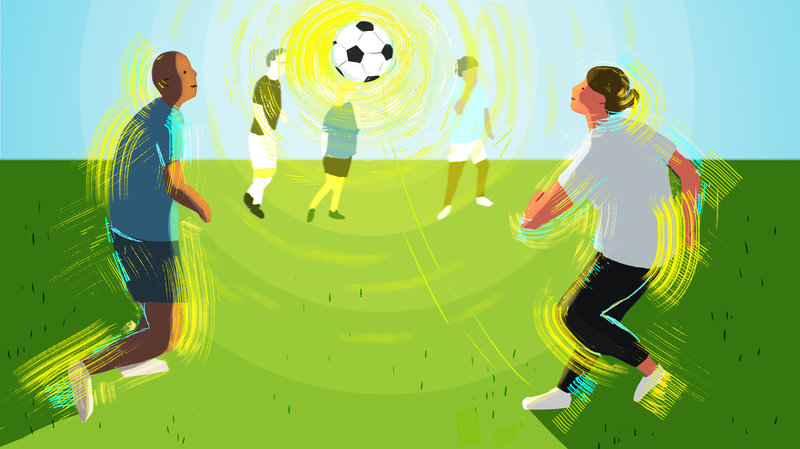by Michael Bailey | Nov 12, 2018 | Environment & Ecology, Politics |

Protestors holding pictures of people who died from use of paint removers, including Drew Wynne, protest outside a Portland, Maine, Lowe’s store on May 10, 2018. They were trying to persuade the retailer to stop selling paint strippers containing methylene chloride
The voluntary action of large retailers is a positive sign for consumers concerned if their health in light of inaction by the government.
The takeaway of this fragmented outcome of action is an old one. Corporate money is powerful. Corporate fiscal interests outweigh public health. Most unfortunately, and disappointedly, the human instinct to protect one another is overpowered by the capitulation to greed and fear of losing political stature by government employees and elected officials.
All of this is most evident in the current administration, but it’s nothing new.
Via NPR
In October 2017, Drew Wynne collapsed inside a walk-in refrigerator at his coffee business in North Charleston, S.C. By the time his business partner found him crumpled on the floor, Wynne was dead. He had suffocated on a chemical called methylene chloride.
The 31-year-old’s death is one of dozens blamed on popular paint removers sold under the brand names Goof-Off, Strypeeze, Klean Strip and Jasco among others.
In recent months, some retailers have said they will stop selling products that contain methylene chloride, also known as DCM, and a second chemical, N-Methyl-2-pyrrolidone, or NMP. But under the Trump administration, federal regulators have repeatedly delayed a ban that has been in the works for years.
The EPA began a risk assessment of methylene chloride in 2014. In January 2017 the agency proposed banning the use of methylene chloride and NMP in paint removers. In the proposed rule, the agency wrote that the chemicals posed “unreasonable risks” to consumers.
Since 1980, more than 50 deaths had been attributed to methylene chloride, according to an investigation by the Center for Public Integrity and Slate.
Listen to, and read the full article…
by Michael Bailey | Oct 26, 2018 | Environment & Ecology, Government & Law |

Proponents say Washington State is a good place to try out carbon reduction ideas because it has abundant hydropower and a waning reliance on fossil fuels. The coal-fired power plant near Centralia, Wash., is scheduled to start shutting down in the next few years.
Thing about these initiatives is that they are rooted in the idea of big coal funding worthwhile projects towards conservation and other programs that are designed to bring money back to the states and communities they serve.
Naysayers don’t get this because of mistrust of government spending. Call it a tax. Call it a fee. The concept is the same. It’s smart and makes sense. There’s lots of money out there to be had from the coffers of these big company fat cat polluters who have sucked this country dry and lied and exploited people and this planet long enough.
Voters and residents in these states need to understand that sometimes a smaller sacrifice can yield much higher benefits for all. If not right away, then often in the nearer future.
The lack of true education of issues with voters in this country is a critical reason smart legislation often doesn’t get done. It’s not just politics. It’s about intelligence.
By Kirk Johnson, NYTimes
CENTRALIA, Wash. — The last coal mine in Washington State closed down about a decade ago in Centralia, about 65 miles south of Seattle, leaving scars on the land and the local economy. Now, a solar electricity project — perhaps the largest in the state — is planned for the same location, by the same company that once ran the mine.
Bob Guenther sees that as a sign that the struggling stretch of Washington State where he has lived most of his life can find a new way forward.
“That’s the vision, a clean energy hub,” said Mr. Guenther, 74, who worked for three decades at a coal-fired power plant in Centralia that is scheduled to start shutting down in a few years. “It’s time for a new economy, and we’re going to have to pull ourselves up by our bootstraps and do everything we can to get it.”
One piece of that transformation, Mr. Guenther said, will be decided on Election Day by people across the state, who will vote on whether to charge companies and utilities for their carbon emissions. The proposed carbon fees, aimed at curbing climate change by making the burning of fossil fuels more expensive, would be the first such state initiative in the nation, and other states are closely watching the election outcome.
Read More>
by Michael Bailey | Oct 25, 2018 | Technology/Internet |

The issue here, the answer, and the question, lies in demand. It is the end user, the consumers, who will dictate the success or failure of this potential reality of tech growth.
If you look around, interview, or talk, to people, your friends, family, those in all age groups, and demographics, the clues to why this is happening, and perhaps, bound to get much worse, are evident.
People. Buyers. They don’t care. They don’t see the threat. They don’t understand the threat.
Not to extrapolate too much, but I am quite sure, that if we examine the age range, education, and the psychological profiles of these type of tech/appliance buyers, we will find answers, not only, for why this grim invasive tech reality is upon us, but also, why many other destructive societal, political, and environmental crises are headed our way.
Via NYTimes/Farhad Manjoo
Article link
More than 40 years ago, Bill Gates and Paul Allen founded Microsoft with a vision for putting a personal computer on every desk.
No one really believed them, so few tried to stop them. Then before anyone realized it, the deed was done: Just about everyone had a Windows machine, and governments were left scrambling to figure out how to put Microsoft’s monopoly back in the bottle.
This sort of thing happens again and again in the tech industry. Audacious founders set their sights on something hilariously out of reach — Mark Zuckerberg wants to connect everyone — and the very unlikeliness of their plans insulates them from scrutiny. By the time the rest of us catch up to their effects on society, it’s often too late to do much about them.
It is happening again now. In recent years, the tech industry’s largest powers set their sights on a new target for digital conquest. They promised wild conveniences and unimaginable benefits to our health and happiness. There’s just one catch, which often goes unstated: If their novelties take off without any intervention or supervision from the government, we could be inviting a nightmarish set of security and privacy vulnerabilities into the world. And guess what. No one is really doing much to stop it.
The industry’s new goal? Not a computer on every desk nor a connection between every person, but something grander: a computer inside everything, connecting everyone.
Cars, door locks, contact lenses, clothes, toasters, refrigerators, industrial robots, fish tanks, sex toys, light bulbs, toothbrushes, motorcycle helmets — these and other everyday objects are all on the menu for getting “smart.” Hundreds of small start-ups are taking part in this trend — known by the marketing catchphrase “the internet of things” — but like everything else in tech, the movement is led by giants, among them Amazon, Apple and Samsung.
For instance, Amazon last month showed off a microwave powered by Alexa, its voice assistant. Amazon will sell the microwave for $60, but it is also selling the chip that gives the device its smarts to other manufacturers, making Alexa connectivity a just-add-water proposition for a wide variety of home appliances, like fans and toasters and coffee makers. And this week, both Facebook and Google unveiled their own home “hub” devices that let you watch videos and perform other digital tricks by voice.
You might dismiss many of these innovations as pretty goofy and doomed to failure. But everything big in tech starts out looking silly, and statistics show the internet of things is growing quickly. It is wiser, then, to imagine the worst — that the digitization of just about everything is not just possible but likely, and that now is the time to be freaking out about the dangers.
“I’m not pessimistic generally, but it’s really hard not to be,” said Bruce Schneier, a security consultant who explores the threats posed by the internet of things in a new book, “Click Here to Kill Everybody.”
Mr. Schneier argues that the economic and technical incentives of the internet-of-things industry do not align with security and privacy for society generally. Putting a computer in everything turns the whole world into a computer security threat — and the hacks and bugs uncovered in just the last few weeks at Facebook and Google illustrate how difficult digital security is even for the biggest tech companies. In a roboticized world, hacks would not just affect your data but could endanger your property, your life and even national security.
Mr. Schneier says only government intervention can save us from such emerging calamities. He calls for reimagining the regulatory regime surrounding digital security in the same way the federal government altered its national security apparatus after the Sept. 11, 2001, attacks. Among other ideas, he outlines the need for a new federal agency, the National Cyber Office, which he imagines researching, advising and coordinating a response to threats posed by an everything-internet.
“I can think of no industry in the past 100 years that has improved its safety and security without being compelled to do so by government,” he wrote. But he conceded that government intervention seems unlikely at best. “In our government-can’t-do-anything-ever society, I don’t see any reining in of the corporate trends,” he said.
Those trends are now obvious. It used to be difficult to add internet connectivity to home devices, but in the last few years the cost and complexity of doing so have plummeted. Today, off-the-shelf minicomputers like the Arduino can be used to turn just about any household object “smart.” Systems like the one Amazon is offering promise to accelerate the development of internet-of-things devices even further.
At a press event last month, an Amazon engineer showed how easily a maker of household fans could create a “smart” fan using Amazon’s chip, known as the Alexa Connect Kit. The kit, which Amazon is testing with some manufacturers, would simply be plugged into the fan’s control unit during assembly. The manufacturer also has to write a few lines of code — in the example of the fan, the Amazon engineer needed just a half-page of code.
And that’s it. The fan’s digital bits (including security and cloud storage) are all handled by Amazon. If you buy it from Amazon, the fan will automatically connect with your home network and start obeying commands issued to your Alexa. Just plug it in.
This system illustrates Mr. Schneier’s larger argument, which is that the cost of adding computers to objects will get so small that it will make sense for manufacturers to connect every type of device to the internet.
Sometimes, smarts will lead to conveniences — you can yell at your microwave to reheat your lunch from across the room. Sometimes it will lead to revenue opportunities — Amazon’s microwave will reorder popcorn for you when you’re running low. Sometimes smarts are used for surveillance and marketing, like the crop of smart TVs that track what you watch for serving up ads.
Even if the benefits are tiny, they create a certain market logic; at some point not long from now, devices that don’t connect to the internet will be rarer than ones that do.
The trouble, though, is that business models for these devices don’t often allow for the kind of continuing security maintenance that we are used to with more traditional computing devices. Apple has an incentive to keep writing security updates to keep your iPhone secure; it does so because iPhones sell for a lot of money, and Apple’s brand depends on keeping you safe from digital terrors.
But manufacturers of low-margin home appliances have little such expertise, and less incentive. That’s why the internet of things has so far been synonymous with terrible security — why the F.B.I. had to warn parents last year about the dangers of “smart toys,” and why Dan Coats, the director of national intelligence, has identified smart devices as a growing threat to national security.
An Amazon representative told me that the company was building security into the core of its smart technologies. The Connect Kit, the company said, lets Amazon maintain the digital security of a smart device — and Amazon is very likely to be better at security than many manufacturers of household appliances. As part of its cloud business, the company also offers a service for companies to audit the security of their internet-of-things services.
The Internet of Things Consortium, an industry group that represents dozens of companies, did not respond to an inquiry.
Mr. Schneier is painting government intervention not as a panacea but as a speed bump, a way for us humans to catch up to the technological advances. Regulation and government oversight slow down innovation — that’s one reason techies don’t like it. But when uncertain global dangers are involved, taking a minute isn’t a terrible idea.
Connecting everything could bring vast benefits to society. But the menace could be just as vast. Why not go slowly into the uncertain future?
Email: farhad.manjoo@nytimes.com; Twitter: @fmanjoo.
by Michael Bailey | Oct 22, 2018 | Athletic Culture, Sports & Fitness |

I’ve believed in this a long time. Exercise and training is a monotonous bore fest only accomplished through discipline and cold commitment. Not the most inspiring motivators. Sports and games are actually “fun!” They build camaraderie, healthy (hopefully) competitive spirit, and social connections.
Via NPR/Sasa Woodruff
Ryan “China” McCarney has played sports his entire life, but sometimes he has to force himself to show up on the field to play pick-up soccer with his friends.
“I’m dreading and I’m anticipating the worst. But I do it anyway. And then, it’s a euphoric sensation when you’re done with it because you end up having a great time,” says McCarney.
McCarney was just 22 when he had his first panic attack. As a college and professional baseball player, he says getting help was stigmatized. It took him six years to get professional support. He still struggles with depression and social anxiety, but says exercising helps him — especially when it’s with his teammates.
Research shows exercise can ease things like panic attacks or mood and sleep disorders, and a recent study in the journal, Lancet Psychiatry, found that popular team sports may have a slight edge over the other forms of physical activity.
The researchers analyzed CDC survey data from 1.2 million adults and found — across age, gender, education status and income — people who exercised reported fewer days of bad mental health than those who didn’t. And those who played team sports reported the fewest.
One of the study’s authors, Adam Chekroud, an assistant adjunct professor at Yale’s School of Medicine, thinks team activity could add another layer of relief for sufferers of mental illness.
He says there are biological, cognitive and social aspects to mental illness.
“Some sports might just be hitting on more of those elements than other sports,” he says. “If you just run on a treadmill for example, it’s clear that you’re getting that biological stimulation. But perhaps there are other elements of depression that you’re not going to be tapping into.”
Now, this study only shows an association between group exercise and improved mental health, and can’t prove that the one causes the other. But, given what is known about depression in particular, it adds up, says Jack Raglin, a professor in the department of kinesiology in the School of Public Health at Indiana University, Bloomington.
People who are depressed often isolate themselves, he says, so exercising in a group setting, “can help alleviate symptoms and deal with this very pernicious symptom of depression.”
Group exercise or team sports might also have an edge over other forms of exercise because they add an element of accountability, says Raglin. He did a study finding that couples who started an exercise program together had a lower dropout rate than those who started one on their own.
The study showed that “very simple forms of social support can be beneficial,” he says.
Scientists don’t know the exact mechanism that makes exercise elevate mood and decrease anxiety, but there is a body of research to show that it does work on the short and long term.
“If you conceptualize exercise as a pill it means, well it’s a rather small pill and easy to take and easy to tolerate,” says Raglin.
One limitation of the Lancet Psychiatry study is the data is based on patients self-reporting their symptoms. Dr. Antonia Baum, a psychiatrist and the past president of the International Society for Sports Psychiatry says patients don’t always give an accurate picture of their mental health. She says the study is an important step in this research field, but the conclusions shouldn’t be taken as scientific gospel.
“We are animals. We are meant to move and if we don’t, a lot of systems slow down, including our mood and cognition,” says Baum. “So it makes intuitive sense that exercise is beneficial, but it’s nice to try to start to wrap our arms around being able to quantify and qualify that in some ways.”
Baum says she works with each of her patients to incorporate exercise into their lives. And she says this study will be a good jumping off point for more research on team sports and mental illness.
But, Baum and other researchers say getting someone who is depressed to start exercising is easier said than done.
“It’s all well and good to conclude that exercise whether it’s done as a solo or a group pursuit is beneficial, but to get patients to do it is another matter and when you have a depressed patient motivation is often lacking,” she says.
Chekroud says getting patients in general to stick to any kind of therapy is challenging.
“It’s not just exercises that people stop doing, they also stop taking medications. They stopped showing up for therapy,” he says. “Adherence is a big problem in health care right now,”
He says the study’s findings could lead to more tools to help people reduce the overall burden of mental illness, now the leading contributor to the global burden of disability.
“The field is really crying out for things that we can do to help people with mental health issues,” says Chekroud.
For McCarney, team sports have helped him get a handle on his symptoms, he says. Before social gatherings, he often feels claustrophobic and panicked, but when he works through the anxiety and gets onto the field, he says it’s always worth it.
“It just gets you around people which I think is another huge thing when you’re trying to maybe break out of a depressive cycle,” he says.
How to get started
For some people, the idea of joining a team or any kind of group fitness activity is terrifying. Here are a few tips for getting started.
Find a sports ambassador. Raglin recommends finding a “sports ambassador,” a friend who can connect you with a group sport or activity. The friend can get you up to speed on the sport and what’s expected of you. Team sports may feel like a leap of faith, says Baum. But, she says the rewards are worth it. “It’s like playing in an orchestra — the sum being greater than the parts — truly thrilling when it all comes together,” she says.
Match your skill level. It’s not hard to find amateur sports teams to join, on sites like meetup.com. A lot of workplaces also have team sport activities, but Raglin says you make sure the skill level is right for you. You’re more likely to have a good experience and want to go back. “There is nothing worse than being on a team where the skill or intensity of the players is way above or below your own level or the level of competition you were looking for,” Raglin says.
Join a run or bike club. If you’re not into team games, go to your local run shop or bike shop to find run communities, bike clubs or community rides to join. Raglin recommends the November Project, which is a free fitness program with chapters in major cities around the world that hosts workouts.
Put money on the line. If you really aren’t into team activities, Baum says getting a personal trainer or signing up for a gym can “help add a social element, and that all important accountability.”
Try the obvious thing first. Baum says to look at the activities you’ve done throughout your life and think about which ones worked best for you. She says she sometimes takes her patients running or walking with her for a therapy session to start modeling the types of exercises that could work for them.





